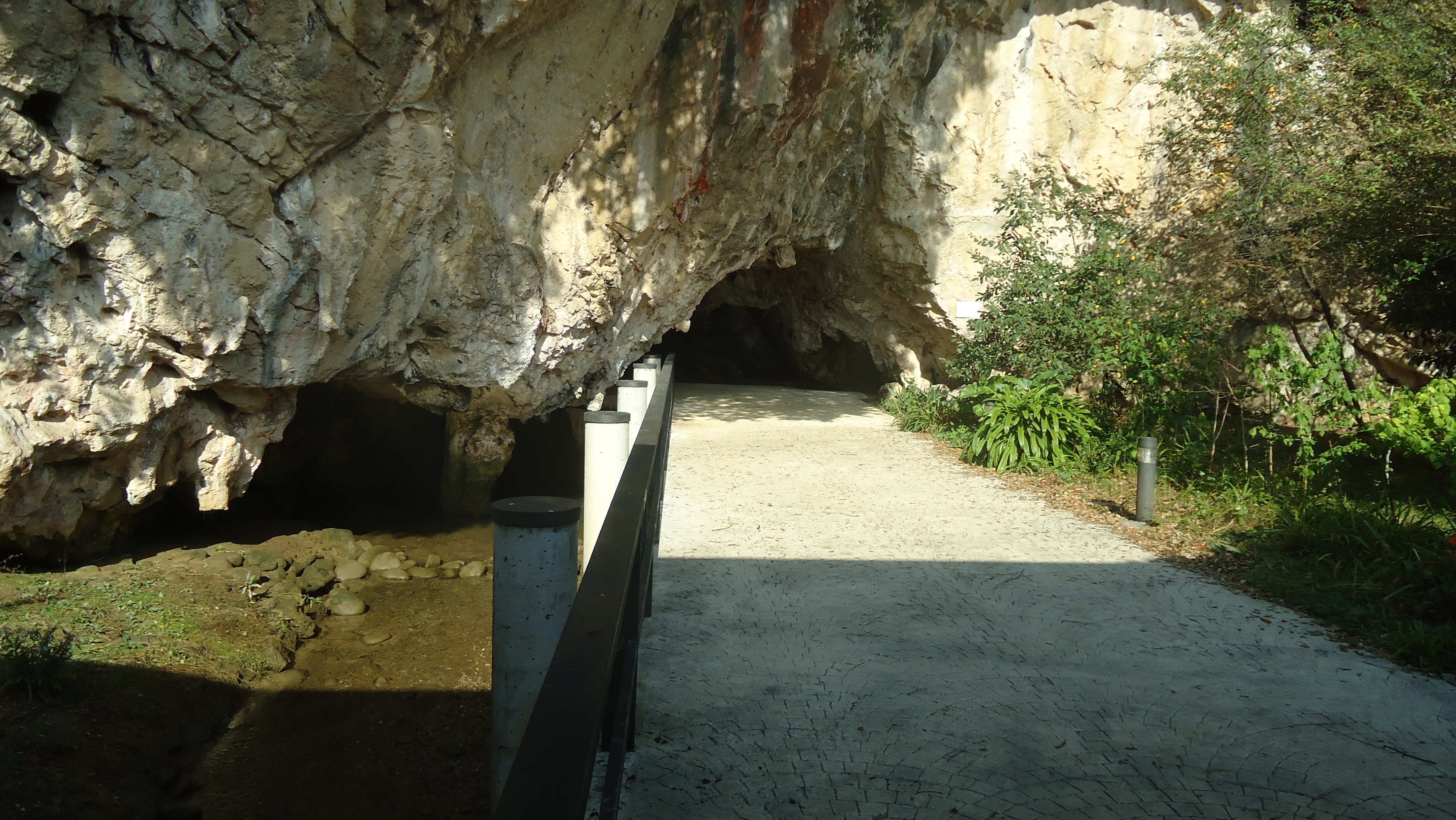Tito Bustillo Cave on:
[Wikipedia]
[Google]
[Amazon]
The Tito Bustillo Cave is a prehistoric rock shelter located in the small town of  The Tito Bustillo Cave has been designated a
The Tito Bustillo Cave has been designated a
Ribadesella
Ribadesella () is a small municipality in the Autonomous Community of the Principality of Asturias, Spain. Known for its location on the Cantabrian Sea, at the outlet of the River Sella, Ribadesella is a town that forms part of the Picos de Eur ...
, in the autonomous community
The autonomous communities () are the first-level administrative divisions of Spain, created in accordance with the Spanish Constitution of 1978, with the aim of guaranteeing limited autonomy to the nationalities and regions that make up Sp ...
of Asturias
Asturias (; ; ) officially the Principality of Asturias, is an autonomous communities of Spain, autonomous community in northwest Spain.
It is coextensive with the provinces of Spain, province of Asturias and contains some of the territory t ...
, Spain. The cave was inhabited by humans (cro-magnon
Cro-Magnons or European early modern humans (EEMH) were the first early modern humans (''Homo sapiens'') to settle in Europe, migrating from western Asia, continuously occupying the continent possibly from as early as 56,800 years ago. They in ...
) before the year 10,000 BC. Due to the collapse of the rock, the original entrance to the cave was sealed thousands of years ago, which made it possible for preservation of objects, tools and wall paintings that were discovered in 1968. Based on those objects found in the cave, it is known that there was a significant human presence during the Magdalenian
Magdalenian cultures (also Madelenian; ) are later cultures of the Upper Paleolithic and Mesolithic in western Europe. They date from around 17,000 to 12,000 years before present. It is named after the type site of Abri de la Madeleine, a ro ...
culture of the Upper Palaeolithic
The Upper Paleolithic (or Upper Palaeolithic) is the third and last subdivision of the Paleolithic or Old Stone Age. Very broadly, it dates to between 50,000 and 12,000 years ago (the beginning of the Holocene), according to some theories ...
, but the cave was probably inhabited before that time.
World Heritage Site
World Heritage Sites are landmarks and areas with legal protection under an treaty, international treaty administered by UNESCO for having cultural, historical, or scientific significance. The sites are judged to contain "cultural and natural ...
, as part of the Cave of Altamira and Paleolithic Cave Art of Northern Spain
The Cave of Altamira and Paleolithic Cave Art of Northern Spain () is a grouping of 18 caves of northern Spain, which together represent the apogee of Upper Paleolithic cave art in Europe between 35,000 and 11,000 years ago (Aurignacian, Grave ...
, and it has 12 prehistorical paintings, making it one of the most complete examples of the prehistoric art in the north of Spain. The oldest of these paintings shows human figures and is around 33,000 years old, as determined by radiocarbon dating
Radiocarbon dating (also referred to as carbon dating or carbon-14 dating) is a method for Chronological dating, determining the age of an object containing organic material by using the properties of carbon-14, radiocarbon, a radioactive Isotop ...
. Some scientists believe it could have been made by Neanderthal
Neanderthals ( ; ''Homo neanderthalensis'' or sometimes ''H. sapiens neanderthalensis'') are an extinction, extinct group of archaic humans who inhabited Europe and Western and Central Asia during the Middle Pleistocene, Middle to Late Plei ...
s, though this theory hasn't been proven.
Some of the paintings represent animals: horses, deer, moose and even a marine animal (probably a whale) and they are believed to have had some kind of ritual purpose to improve their hunting. There is also a panel representing female genitalia and it is believed to have had the intention to invoke fertility. The oldest painting in the cave represents an anthropomorphic figure, part male, part female.
Apart from the paintings, some objects from the Magdalenian period were perfectly preserved. The most important ones are some harpoons made of bone and a carved staghorn of a goat head.
References
{{Authority control 1968 archaeological discoveries Caves of Spain Landforms of Asturias World Heritage Sites in Spain Prehistoric sites in Spain Art of the Upper Paleolithic Caves containing pictograms in Spain Bien de Interés Cultural landmarks in Asturias Cave of Altamira and Paleolithic Cave Art of Northern Spain Early European modern humans Magdalenian